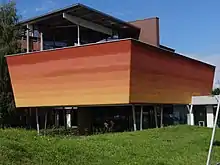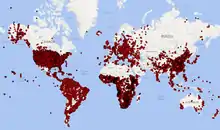ISRIC - World Soil Information, also legally known as International Soil Reference and Information Centre, is an independent science-based foundation established in 1966 following a recommendation of the International Society of Soil Science (ISSS, now International Union of Soil Sciences| (IUSS)) and the United Nations Educational, Scientific and Cultural Organization (UNESCO).[1] It serves to provide information about the world's soil resources with an aim to address major global issues.

ISRIC produces, gathers, compiles, and serves soil information at global, national, and regional levels with partners. Work is organized according to four work streams: Setting Standards and References, Soil Information Provisioning, Capacity Building and Advocacy, and Derived products.[2] Reference collection includes country documentation (reports, maps, and slides) and soil specimens (monoliths, samples, thin sections, and hand specimens). Physical examples of the soil monolith collection are on permanent display in the World Soil Museum. ISRIC is a member of the ISC World Data System, also known as the WDC-Soils.

External links
References
- ↑ "International Soil Reference and Information Centre (ISRIC) | Knowledge Hub". knowledge.unccd.int. Retrieved 2022-04-07.
- ↑ ISRIC (2019). Annual report2018/2019, ISRIC - World Soil Information, Wageningen (NL) (PDF) (Report). p. 17.